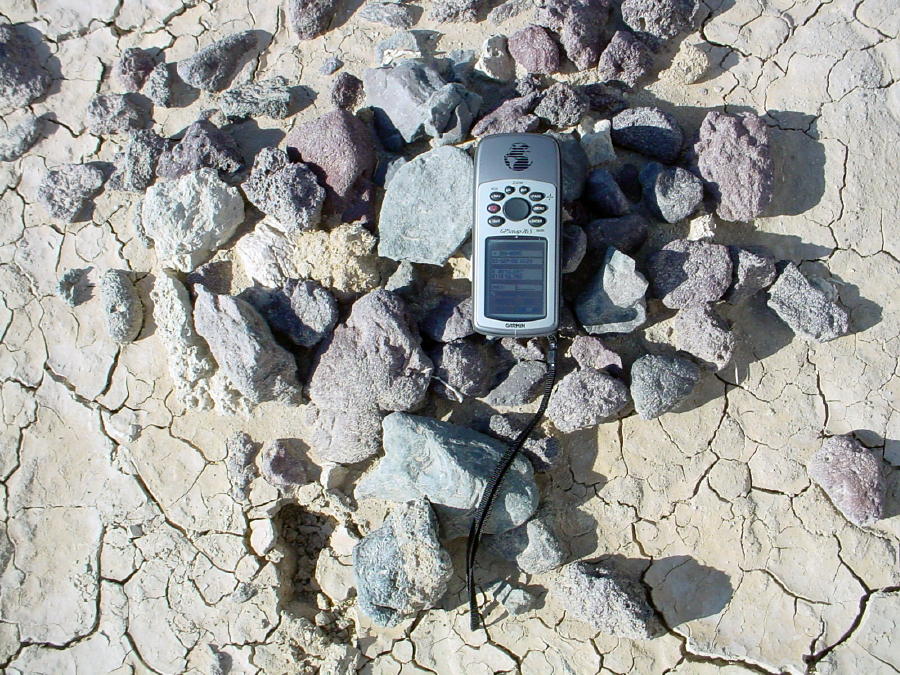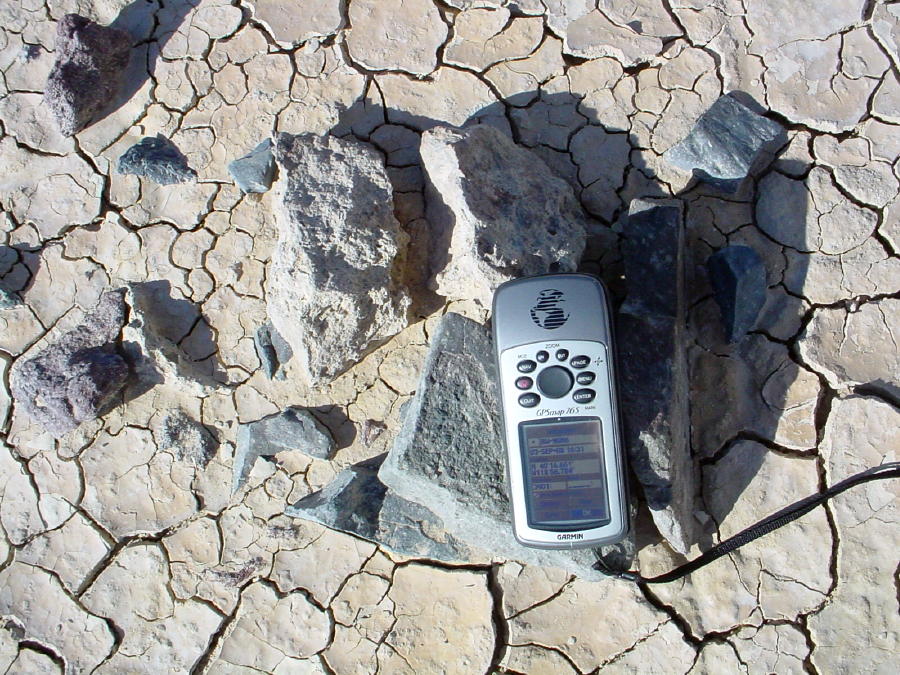An Article In Meteorite-Times Magazine
by Robert Verish
![]()
An Article In Meteorite-Times Magazine
by Robert Verish
Recent Observations at Bluewing Flat
Evidence was found that the entire lakebed has been "resurfaced" recently
During a recon survey of Bluewing Flat (Pershing Co., NV) in September of this year (2008) it was observed that the entire lakebed had been resurfaced. Portions of the lakebed, that in the past were once soft and uneven, were now "smoothed-out" and hardened. Other portions of the lakebed, most noteably the northern end of the drylake where over the past 9 years nearly all of the "Bluewing Meteorites" have been found, appears to be covered with a "fresh" layer of clay and silt. For the northern end of the drylake, the present condition of the lakebed would severly diminish the odds of making additional meteorite finds. For the "smoothed-out" southern half of the drylake, it still remains to be seen if there has been sufficient removal/relocation of lakebed clay and silt to result in meteorites being exhumed, which would greatly increase the odds of their being recovered.

As recently as 4 years ago, the northern end of Bluewing Flat was much different from the southern half of that drylake. At that time, the lakebed at the northern end was very firm and had polygonal-shaped cracks with edges that were well-rounded. This contrasted to the southern portion where the lakebed was covered with a layer of fluffy-soft, expansive clay. There were numerous tire tracks that were deeply gouged into this layer. At that time, there was a narrow margin separating the "firm" lakebed from the "soft" portion of the mudflat. In fact, there was a noticeable slope. When traveling from the hardpan up to the mudflat, there was a distinct rise of at least 1 to 2 feet.

But now (as of September 2008) the lakebed is uniformly flat. The southern portion is no longer "soft" and there are no trace of the numerous, deeply-trenched tire tracks. The northern end is still firm, but the polygonal-cracks are no longer the mature/shallow variety with the well-rounded edges. Now the cracks are sharp-edged and appear deeper. These are indications that the cracks are recent; presumeably from a freshly deposited layer of mud.

The surface of Bluewing Flat has made some remarkable changes over the past 4 years. It is my opinion that, at some point over that period of time, the entire lakebed was inundated and that through the process of wave action, the "fluffy" mud from the southern portion of the flat was evenly "redistributed" (redeposited) across the entireity of Bluewing Flat.

At the present time, this condition will have a negative impact on the capability of recovering meteorites on this portion of the lakebed. To change this condition, a similar "inundation" event would be required. But in this case, a northerly (winter) wind while the lake is inundated would be required in order to produce sufficient wave action to transport the top layer of mud back to the southern portion of the lake.
REFERENCES:
Blue Wing Flat USGS Blue Wing Flat North Quad, Nevada, Topographic Map - From a search on Google for "Bluewing Flat"
For for more information, please contact me by email:
Bolide*Chaser
